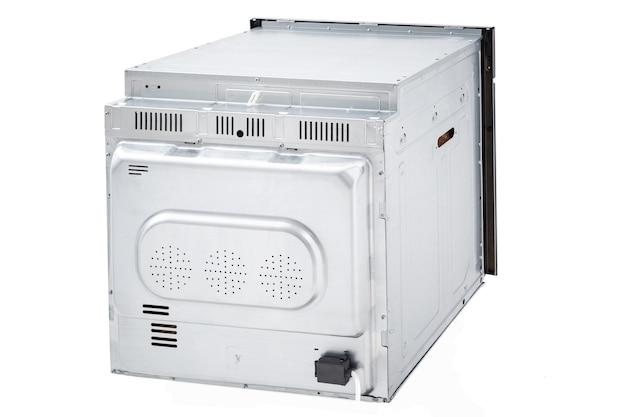Have you ever wondered why 45 degrees is considered the optimal launch angle for achieving maximum range in projectile motion? In this blog post, we will dive into the fascinating world of physics to unravel the secrets behind this phenomenon. From understanding the relationships between launch angles and distances to exploring the concepts of complementary angles and maximum heights, we will explore the intricacies of why 45 degrees holds a special significance.
Projectile motion is a key concept in physics, describing the motion of an object launched into the air and influenced only by the forces of gravity and air resistance. Understanding the factors that determine the range and height of a projectile’s trajectory can help us predict and optimize the motion of various objects, from a basketball being shot into a hoop to a rocket launching into space.
So, join us as we explore the reasons why 45 degrees is the magic number for maximum range in projectile motion and unravel the fascinating connections between launch angles, distances, and heights. Let’s dive in and unlock the mysteries of this captivating field of physics!
Why 45 Degrees is the Maximum Range
The Physics Behind the Magic Angle
When it comes to the maximum range one can achieve with a projectile, the angle at which it is launched plays a crucial role. In the case of most projectiles, be it a baseball or a cannonball, the magic number seems to be 45 degrees. But why this exact angle? Let’s delve into the physics behind it.
Finding the Sweet Spot
To understand why 45 degrees is considered the sweet spot for maximum projectile range, we need to look at the forces acting on the object. When a projectile is launched, it experiences two main forces: gravity pulling it downward and the initial velocity propelling it forward.
The Battle Between Gravity and Velocity
While gravity wants to bring the projectile straight down, the initial velocity pushes it forward. At smaller launch angles, gravity has a stronger impact, causing the object to spend more time in the air and ultimately travel a shorter distance. On the other hand, at larger launch angles, the initial velocity takes precedence, resulting in a higher upward component that counteracts gravity. However, this also means that the horizontal component of the velocity decreases, reducing the range.
The Perfect Balance
So, at what angle do these forces balance out for maximum range? Well, after many experiments and calculations, scientists found that 45 degrees offers the perfect balance between the horizontal and vertical components of velocity. At this angle, the projectile spends an equal amount of time in the air and travels the furthest distance possible.
The 45-Degree Sweet Spot and Its Exceptions
While 45 degrees may be the ideal angle for maximum range in a vacuum with no air resistance or other external factors, it’s essential to note that real-world conditions often present exceptions. Factors such as air resistance, wind, and the shape of the projectile can affect the optimum launch angle.
The Artillery Advantage
Interestingly, the 45-degree launch angle is not only prevalent in common projectiles but also seen in the field of artillery. Artillery gunners have long known that this angle offers the best compromise between maximum range and hitting the desired target.
In the realm of projectile physics, the 45-degree launch angle holds a special place as the angle that maximizes range. The balance between the forces of gravity and initial velocity creates the perfect scenario for an object to soar through the air, defying gravity’s pull. So, next time you find yourself pondering why 45 degrees is the maximum range, remember the delicate dance between gravity and velocity that makes it the magic angle.
FAQ: Why is 45 degrees the maximum range
Why do complementary angles give the same range
When it comes to projectiles, like launching a water balloon at your pesky neighbor’s yard, complementary angles are your best buddies. You see, the range of a projectile is determined by that perfect balance between its horizontal and vertical components. And guess what? Complementary angles have the magical power to give us the same range! So whether you launch that water balloon at 30 degrees or its complementary angle of 60 degrees, it will end up sailing through the air the same distance. It’s like nature’s way of telling us, “Hey, it’s all about the range, baby!”
For which pair of angles is the range equal
Now, here’s a fun fact for you math enthusiasts out there. When it comes to projectile motion, there’s a special pair of angles that conjure up equal ranges. These angles are known as complementary angles. Picture this: if you launch your projectile at 40 degrees, its complementary angle of 50 degrees will give you the same range. It’s like having a buy-one-get-one-free deal, but for angles! So go ahead and experiment with different angles, but don’t forget to keep an eye on those complementary ones for some extra range-doubling goodness!
Why is 45 degrees the maximum range
Ah, the famous 45 degrees! It’s the sweet spot for maximum range in projectile motion. Picture this: you’re launching a cannonball at your arch-nemesis on the other side of the field. You want that thing to fly as far as possible, right? Well, 45 degrees is the angle that will give you the most bang for your buck. And why is that, you ask? Imagine dividing your 45-degree launch angle into two equal parts: one part for the upward motion and the other for the downward motion. This symmetry is what brings you that sweet maximum range. It’s like an elegant dance in the sky, where gravity and angle meet to create the perfect trajectory.
Why are ranges equal
Ranges are equal because nature loves to keep things fair and balanced! When it comes to projectile motion, the universe has this nifty way of compensating for different launch angles. Let’s say you launch your favorite rubber ducky at 30 degrees, and your mischievous sibling launches theirs at 60 degrees. Despite the difference in angles, both rubber duckies will magically end up traveling the same horizontal distance. It’s like a cosmic game of catch-up, where the angles may differ, but the ranges remain equal. So next time you’re at a science fair, remember that the universe loves a fair fight, even in the world of projectiles!
What is the relation between time of flight and maximum height
Ah, the relationship between time of flight and maximum height, it’s a fascinating one indeed! When you launch a projectile into the air, it goes up, up, up, and then gravity kicks in, bringing it back down to Earth. Now, the time it spends soaring through the air is called the time of flight. And guess what? The time of flight is directly related to the maximum height reached by our little projectile friend. The longer the time of flight, the higher it will climb before making its triumphant return. It’s like a game of cosmic leapfrog, where time and height dance together, defying gravity for a brief, exhilarating moment.
Is the maximum height attained by a projectile largest when its horizontal range is maximum
Oh, I like your curiosity! But let me tell you a little secret. The answer is a resounding nope! When it comes to projectile motion, maximum height and maximum range don’t always go hand in hand. Picture this: you’re launching a watermelon seed with enough force to impress your grandma. While maximizing the horizontal range might send that seed soaring a great distance, it doesn’t necessarily guarantee the seed will reach its peak height. Think of it this way: sometimes, going the distance means sacrificing a bit of height. So don’t be fooled by the allure of maximum range, my friend. Sometimes, it’s all about aiming for the stars and watching that watermelon seed touch the heavens!
Why does the launch angle affect distance
Ah, the launch angle, a small but mighty player in the realm of projectile motion. You see, the launch angle determines the initial direction at which your projectile takes off into the wild blue yonder. And that initial direction, my friend, has a massive impact on the distance your projectile will travel. For instance, if you launch a paper airplane straight up into the sky, well, it won’t get very far before it decides to take a nosedive. But if you launch that same paper airplane at a slight forward angle, watch it soar! It’s like shooting hoops backward without even looking, defying gravity and snagging that slam dunk. So remember, when it comes to distance, the launch angle is your secret weapon!
At what angle is the height maximum
Ah, the quest for maximum height! It’s like reaching for the stars, quite literally. Now, let’s spill the beans on this secret: the angle for maximum height is a mesmerizing 90 degrees. Yes, you read it right, a good old vertical launch! When you shoot your confetti cannon straight up into the air, it reaches its maximum height at this magical angle. It’s like waving hello to the clouds while gravity momentarily takes a coffee break. So if you want to make a grand impression, aim high, my friend, and watch that confetti rain down like a magnificent meteor shower!
And there you have it, my inquisitive reader! Your burning questions about why 45 degrees is the maximum range have been answered with a sprinkle of humor and a dash of science. Remember, next time you find yourself launching anything into the air, whether it’s a water balloon or your dreams, keep those angles in mind. Who knows, you might just achieve projectile perfection!

